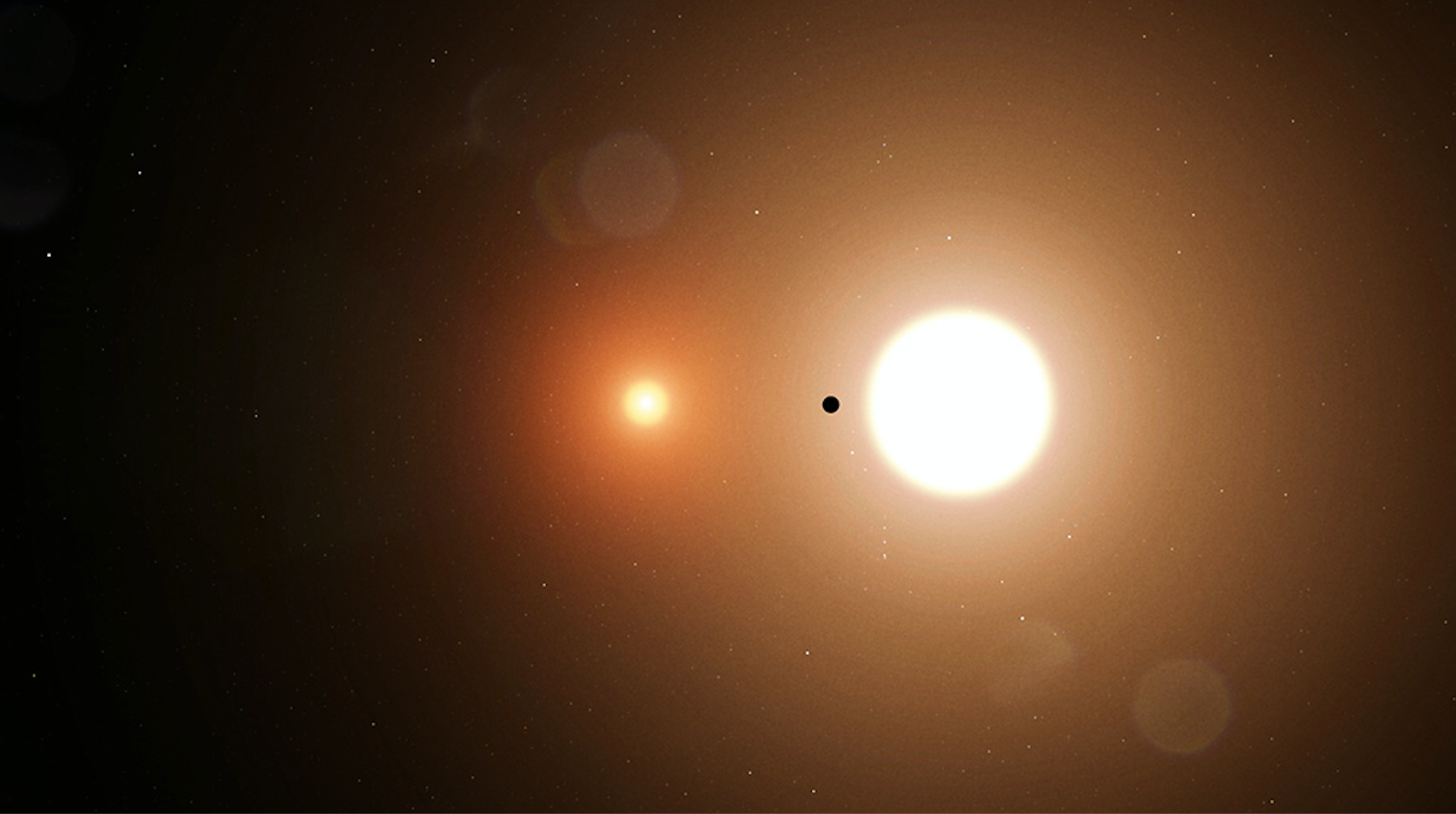NASA’s New Exoplanet Hunter Discovers Its First Planet Orbiting Two Stars

Credit to Author: Becky Ferreira| Date: Wed, 08 Jan 2020 14:26:54 +0000
A high school student helped scientists discover a planet that is orbiting two stars located 1,300 light-years from Earth. The discovery of the exoplanet, named TOI 1338 b, was announced on Monday during the American Astronomical Society meeting in Honolulu, Hawai’i.
TOI 1338 b has a similar sky view to Tatooine, the fictional two-sunned world of the Star Wars universe. But given that it is about seven times bigger than Earth, putting it closer in size to Neptune or Saturn, it is probably a gas giant and not a desert world inhabited by Jawas and Tusken Raiders.
The signature of the newly detected planet was spotted by Wolf Cukier, a student at Scarsdale High School in New York, while he was a summer intern at NASA’s Goddard Space Flight Center in 2019.
Cukier was tasked with examining observations captured by NASA’s Transiting Exoplanet Survey Satellite (TESS), a spacecraft launched in April 2018 that specializes in screening nearby stars for new planets.
The dataset he was studying had already been pruned down by a citizen science project called Planet Hunters TESS, a hub for volunteers to flag systems with interesting properties. The volunteers identified several likely “eclipsing binaries.” which are systems with two stars that pass in front of each other from our perspective at Earth, causing regular “stellar eclipses.”
“About three days into my internship, I saw a signal from a system called TOI 1338,” Cukier said in a statement. “At first I thought it was a stellar eclipse, but the timing was wrong. It turned out to be a planet.”
The planet is detectable as it transits in front of the larger of the two stars in the TOI 1338 system, which is about 10 percent more massive than the Sun. The other star is about 30 percent as large as the Sun, and its light is too faint to make out a transit. The shadowy outline of TOI 1338 b passed in front of the larger star every 93 to 95 days, in TESS’s observations.
This marks the first time that TESS has spotted a world that orbits two stars, known as a circumbinary planet, though previous missions have found about a dozen of these worlds in other systems. A forthcoming paper about the discovery, co-authored by Cukier, is due out soon from the journal Earth and Planetary Astrophysics (an unpublished version of the article is available on the preprint server arXiv).
In addition to finding its first circumbinary planet, the TESS team announced that the satellite has detected its first Earth-scale planet within the habitable zone of its star.
Called TOI 700 d, the planet circles a dwarf star about 40 percent the size of the Sun every 37 days. It shares the system with two other planets, also detected by TESS, with much shorter and closer orbits, indicating that they are probably too hot to host life.
TOI 700 d, meanwhile, is far enough away to be considered within the star’s habitable zone, meaning it is possible for it to bear liquid water on its surface—though it is not known whether the newly detected world is actually watery or flush with life.
TOI 700 d “joins a very small population of presently known habitable-zone terrestrial-sized planets,” according to a forthcoming paper in Earth and Planetary Astrophysics, which is also available as a preprint on arXiv.
“Humans have wondered whether life exists elsewhere in the universe for centuries,” said the authors in the paper. “Thanks to new technologies and rapid advancements in the study of exoplanets in the past few decades, we are making progress towards answering this question scientifically.”
This article originally appeared on VICE US.